Yanaka, a part of the Taito ward in East Tokyo, is the region that most closely resembles pre-World War II Tokyo. Yanaka is a must-see tourist site with temples, shrines, historic wooden residences, and excellent traditional shopping streets.
Continue reading to learn more about the Tokyo neighborhood of Yanaka, including the must-see tourist attractions and more.
Where is Yanaka Located in Japan?
Yanaka is located in Tokyo’s Taito Ward, and together with Nezu and Sendagi, it constitutes the Yanesen traditional district.
Yanaka District Location Via Google Maps
It is located north of Ueno and is accessible by foot through lovely backstreets.
Trains from Nippori Station on the JR Yamanote, Keisei, Keihintohoku, Joban lines, or Sendagi on the Chiyoda Line can quickly get you to most locations in Yanaka.
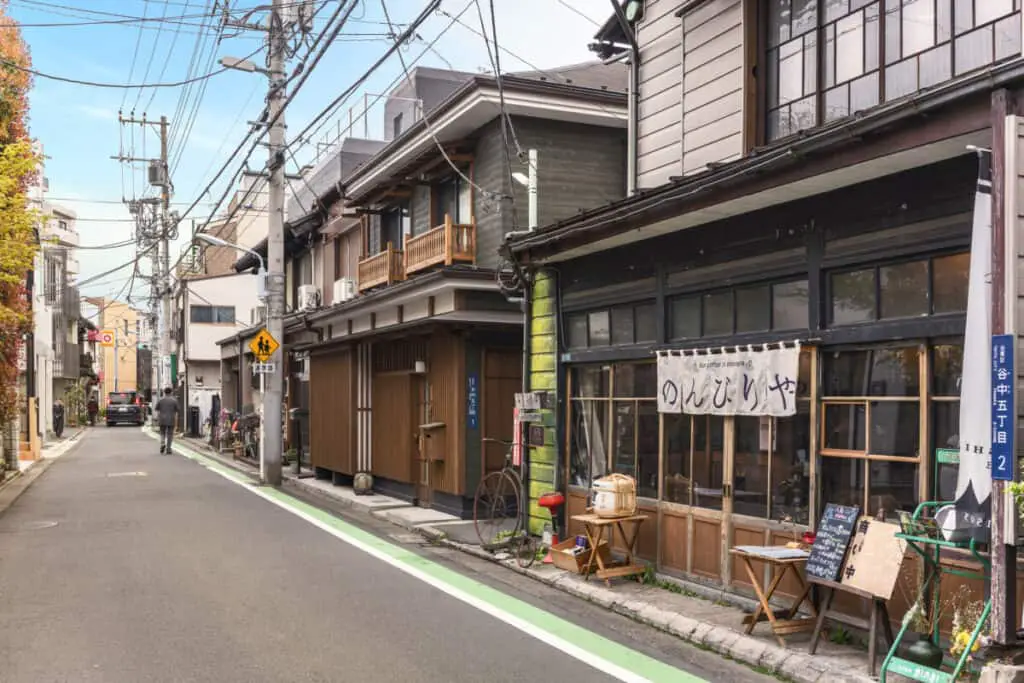
Why is Yanaka Considered a Popular Tourist Destination in Japan?
Yanaka is one of Tokyo’s few neighborhoods where the shitamachi ambiance is still alive and present. An old town that feels evocative of Tokyo from previous decades still exists. There is a sense of nostalgia and rustic beauty throughout the neighborhood.
Yanaka is within walking distance to Ueno Park, which provides a different type of sightseeing experience than other regions of Tokyo.
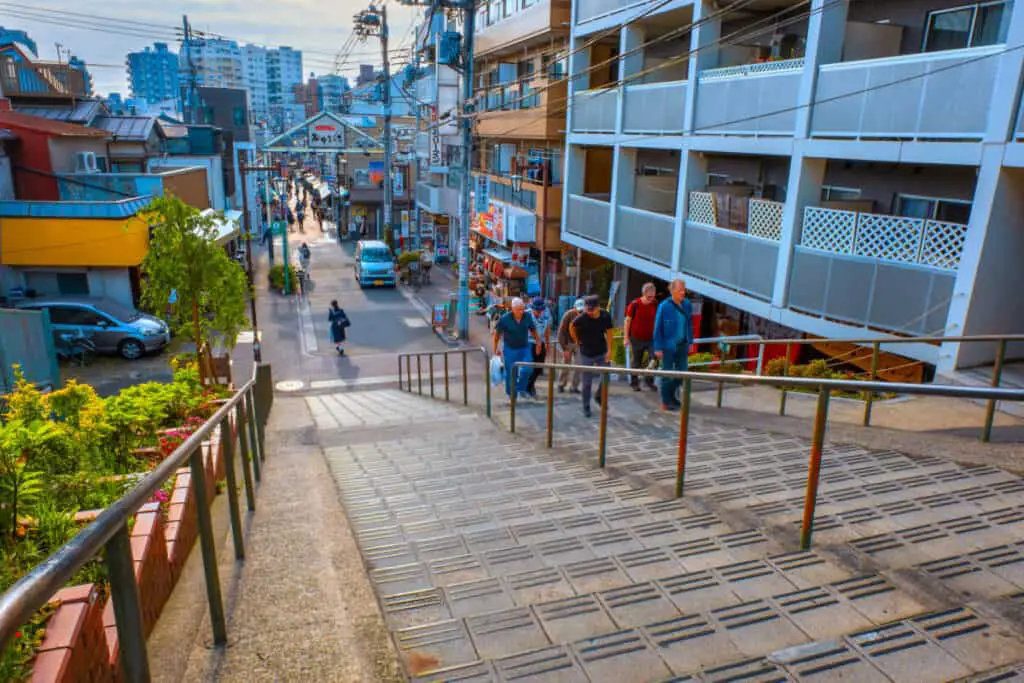
Shops offered at Yanaka Ginza provide a variety of traditional items from food and needs to clothing and toys. Prices are very reasonable, with some booths selling small snacks and finger foods for less than 50 yen.
Yanaka remains a residential zone with many residents, and tourists may see the continuous daily activities and trades in the district market through Yanaka Ginza.
Indeed, the area’s distinct shitamachi character draws a large number of international and domestic visitors.
Exploring the Yanesen Area
Yanaka, together with Nezu and Sendagi, is part of the Yanesen region in ancient Tokyo’s Shitamachi district.
Shitamachi, which means “beneath the city,” was originally the less affluent side of Tokyo.
This difference in wealth could be seen both physically and culturally when compared to the luxurious Yamanote region.
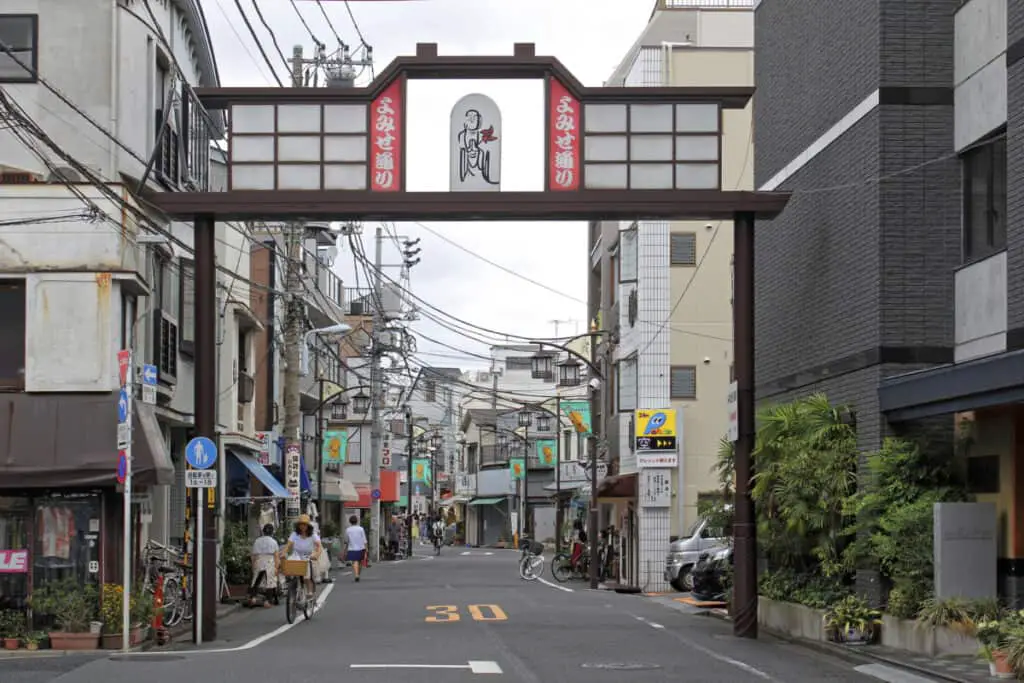
The split in the city emerged when the Tokugawa-shogunate handed the higher grounds to the aristocratic families.
While the names were never officially adopted, they persisted and are widely used to describe the ambiance of specific locations today.
The Yanesen region has become a popular site for regeneration while being miraculously unaffected by wars or natural calamities.
The blend of actual ancient sites and their retro-style neighbors is unexpectedly charming, with a temple-town ambiance, tiny lanes, wooden houses, and plenty of back alleys to explore.
Yanaka offers the most vibrant atmosphere of the three regions, thanks to the bustling Yanaka Ginza retail shopping street, a wide range of cafés and coffee shops, and an abundance of temples to visit.
Yanaka’s Must-See Tourist Sites and Attractions
Make Sure You Visit the Yanaka Cemetery
Yanaka Cemetery is one of Tokyo’s most well-known cemeteries. With its lush vegetation and lovely cherry tree avenue, Yanaka Cemetery evokes the sense of a park. Yanaka Cemetery is also home to the burial of Tokugawa Yoshinobu, Japan’s final shogun.
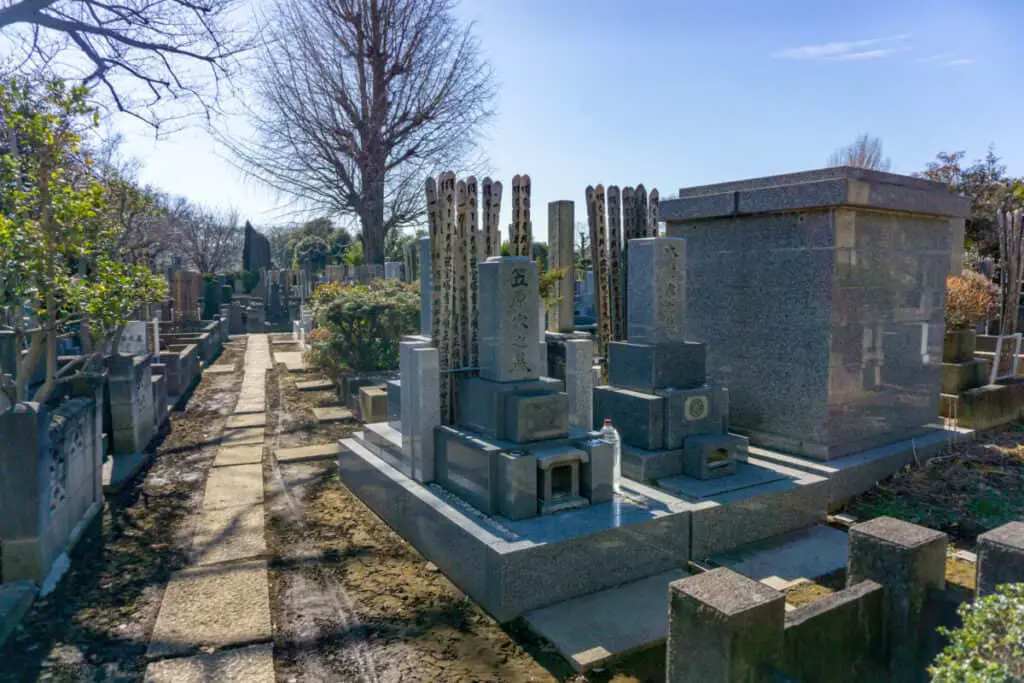
Other historical personalities from Japan who were well-known during their lifetimes are also buried in Yanaka Cemetery. Except for stray cats and the occasional bird, you’ll probably be alone if you go inside the cemetery.
This well-kept cemetery, with a central road lined with cherry trees, is a beautiful place to begin your wanderings since it is just around the corner from Nippori Station.
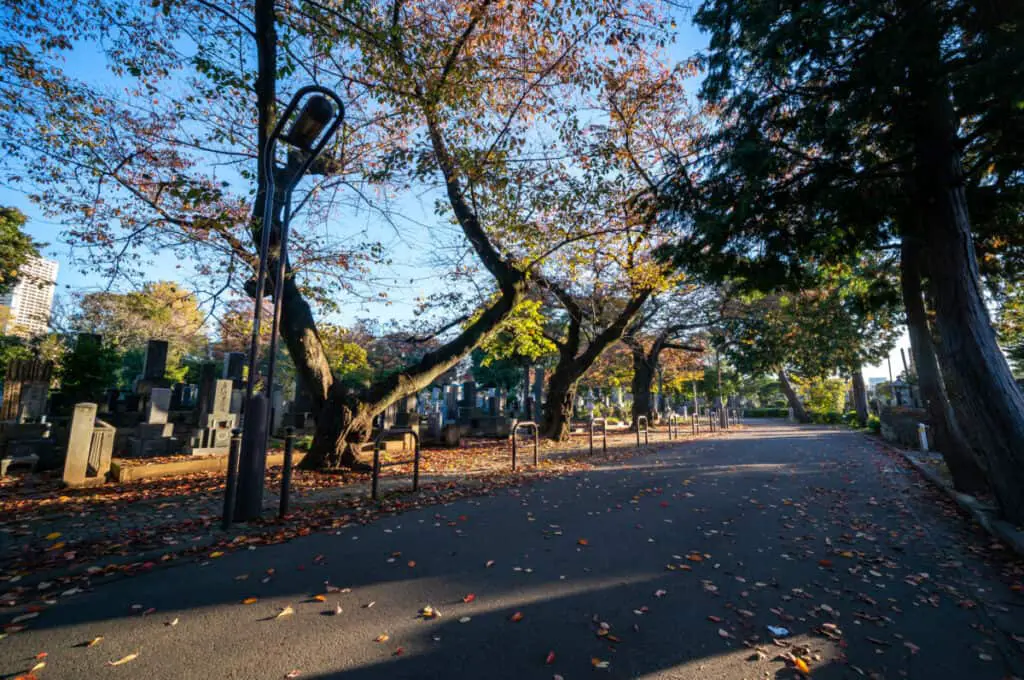
Although the cemetery used to be a part of Tennoji Temple, it was separated during the Meiji Era and is currently Japan’s largest cemetery, with over 7,000 tombs occupying the 25-acre territory.
The graveyard is scrupulously maintained with its own police station to keep things running smoothly despite its vastness.
Take a Stroll Through Tennoji Temple
Tennoji Temple is located near Nippori Station, within Yanaka Cemetery. Tennoji Temple used to be part of Yanaka Cemetery.
Tennoji Temple was founded in 1274 and is associated with Nichiren Daishonin, a nationalist Buddhist teacher. Tennoji Temple is known for its ancient cherry trees and a giant bronze Buddha statue that dates back to 1690.
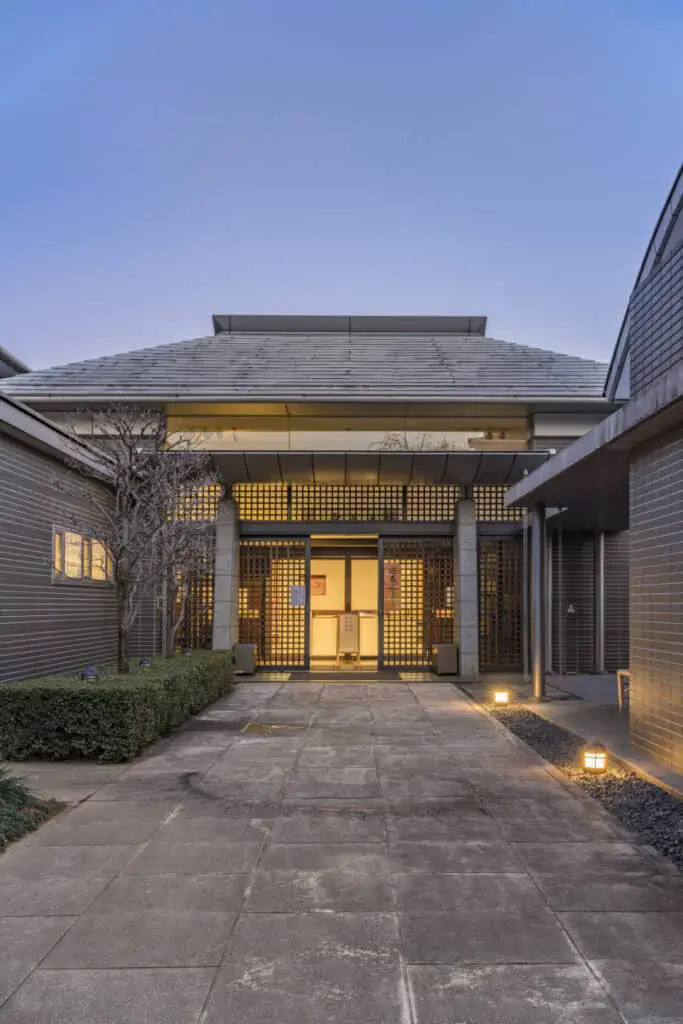
Tennoji Temple is one of only two temples in Yanaka, as opposed to Yanesen, that houses the legendary Seven Lucky gods of Yanaka and is home to the goddess Bishamonten.
Tennoji Temple Official Website
After wandering through the cherry tree lane and leaving on the opposite side of the cemetery, you’ll have access to the Yanaka district, which is home to a plethora of temples and shrines, as well as other attractions.
Ensure you Visit the Shopping Street of Yanaka Ginza
You may explore the 80+ stores and booths of Yomisedori after descending the TV-famous steps, which contain everything from bento boxes to butchers, sake bars to footwear, and even cat-shaped taiyaki pastries.
It’s a terrific place to buy souvenirs, and there are lots of sweet delicacies and coffee places to sample.
There are art galleries to visit and various cuisines to sample, with the cat taiyaki and the 10-yen Manju store standing out.
Yanaka Ginza Location Via Google Maps
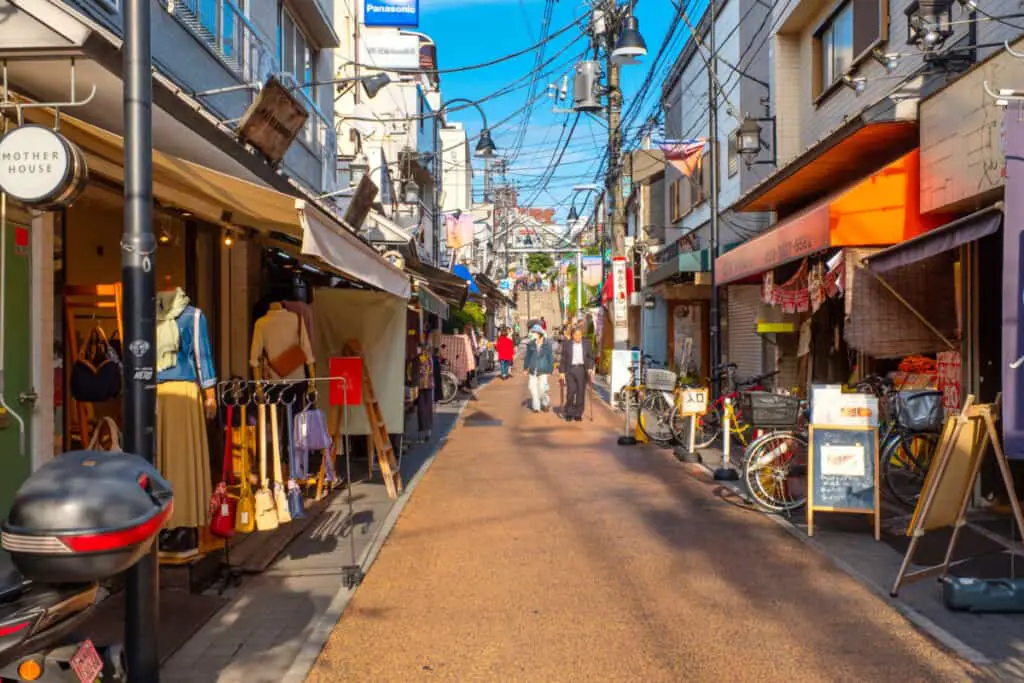
Make sure to taste one of these sweet little pastries filled with red bean paste and encased in a soft rice flour cushion with tastes like matcha and brown sugar.
Yanaka Ginza is also a great spot to buy presents and souvenirs. You may browse traditional ceramic stores and pick up a basket on this shopping route, or you can opt for more modern presents.
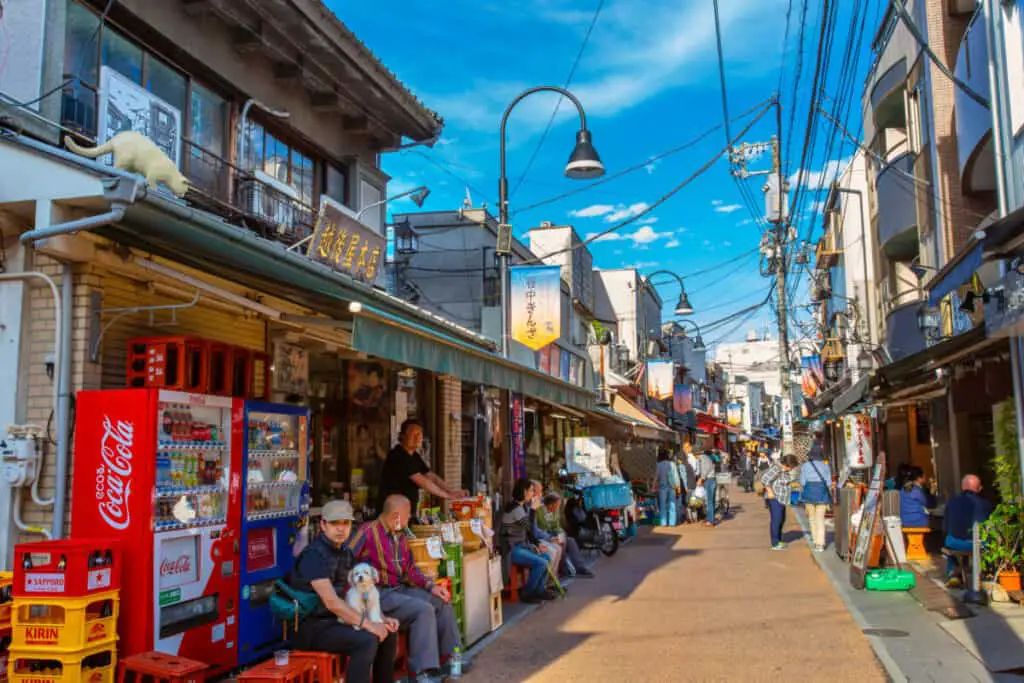
There are some really interesting Hanko stamps available for customization, as well as a variety of gorgeous tins and smaller presents, as well as a variety of cat-related items.
There are also typical toy stores, so you’ll have no trouble finding something. Coffee shops and sake bars are also available in Yanaka Ginza, each with its distinct style and charm.
Yanaka’s Backstreets Are Also Worth a Visit.
Local flower stores and coffee businesses may be found on the backstreets of Yanaka. These streets are bustling with local retirees having a break and conducting errands.
On these backstreets, you will find more bicycles and plants than ever before, as well as a slew of sleeping cats. The Tokyobike business rents out excellent bikes, which is terrific to get about the neighborhood and site see.
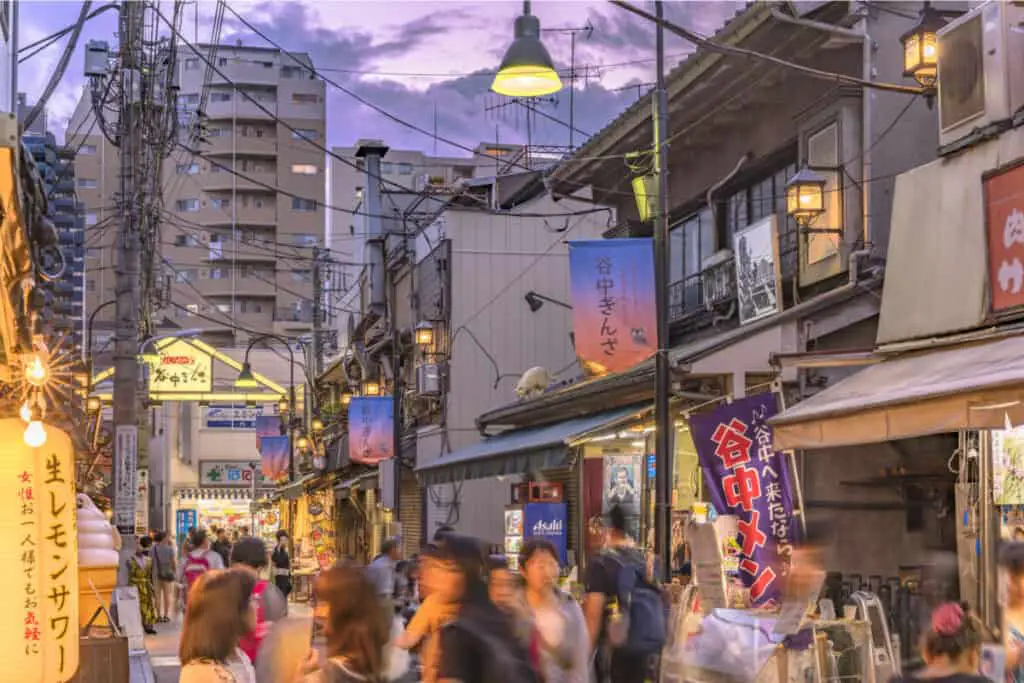
One must remember to stop at the ancient Himalayan cedar tree that rises over a small popular shop at a fork in the road.
The tree, which has been featured in several TV series and films, is said to have been planted by the shop owner’s grandfather just under 100 years ago.
A community organization spared the tree as a local landmark despite attempts to chop it down a few years ago.
What Other Popular Temples or Shrines Should One Visit in the Yanaka Area?
Yanaka’s temple and shrine area, which is adjacent to Yanaka Cemetery to the west and mirrors it in shape and size, is peppered with numbers of Buddhist temples and Shinto shrines.
Between them are wooden houses that have stood the test of time, surviving fires, negligence, redevelopment, nature, and tear-downs, among other things.
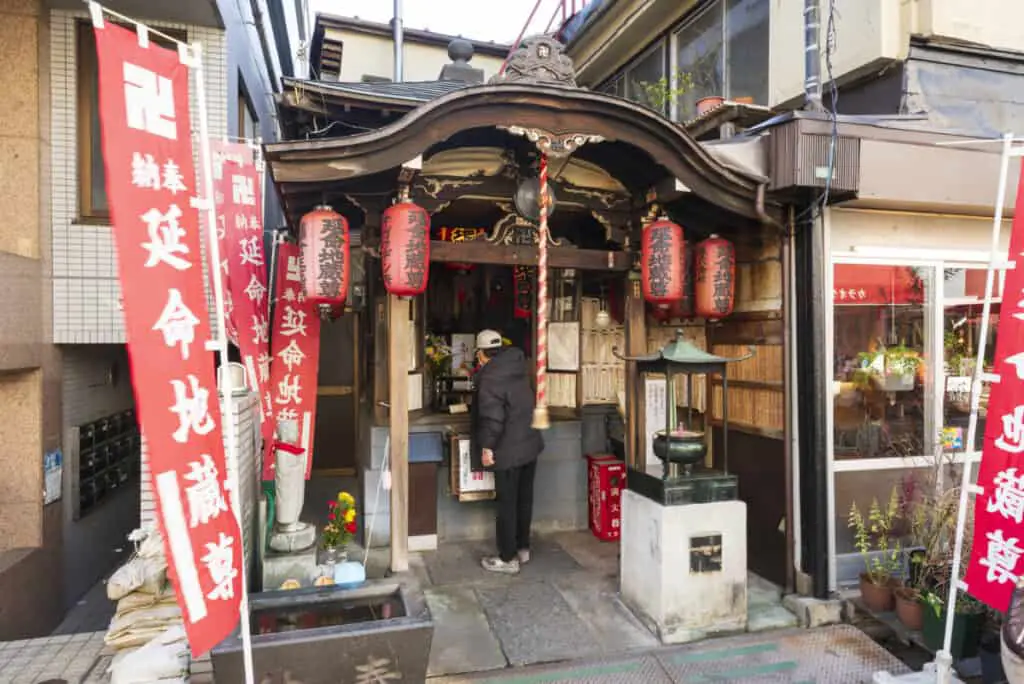
The temple and shrine area of Yanaka is located on high ground and considered a historical treasure trove of old religious and secular buildings that distinguishes it unique from virtually everywhere else in Tokyo.
Wander the sloping alleys and take in the exquisite stillness of the old Tokyo, with some notable instances of modern house architecture thrown in for good measure.
Why Visit Hongyoji Temple?
Futsujubo Nichiryo, a Buddhist monk who was a fervent believer in Nichiren, founded Hongyoji Temple.
There is a stone monument of lecturing Nichiren Shonin on the grounds and a big Japanese zelkova tree named “Okeyaki,” beneath which Nichiren kept the night dew out after landing on Sado.
Hongyoji Temple in Yanaka is known for its cherry blossoms in the spring. Three haiku stones carved with haiku poems by Taneda Santoka and Kobayashi Issa can be seen on the temple grounds.
Why Visit Zenshoan Temple?
Zenshoan Temple is a relatively modern Buddhist temple founded in the late nineteenth century and loved by politicians. It has a gorgeous golden Buddha on its grounds, befitting its rank among the nation’s elite.
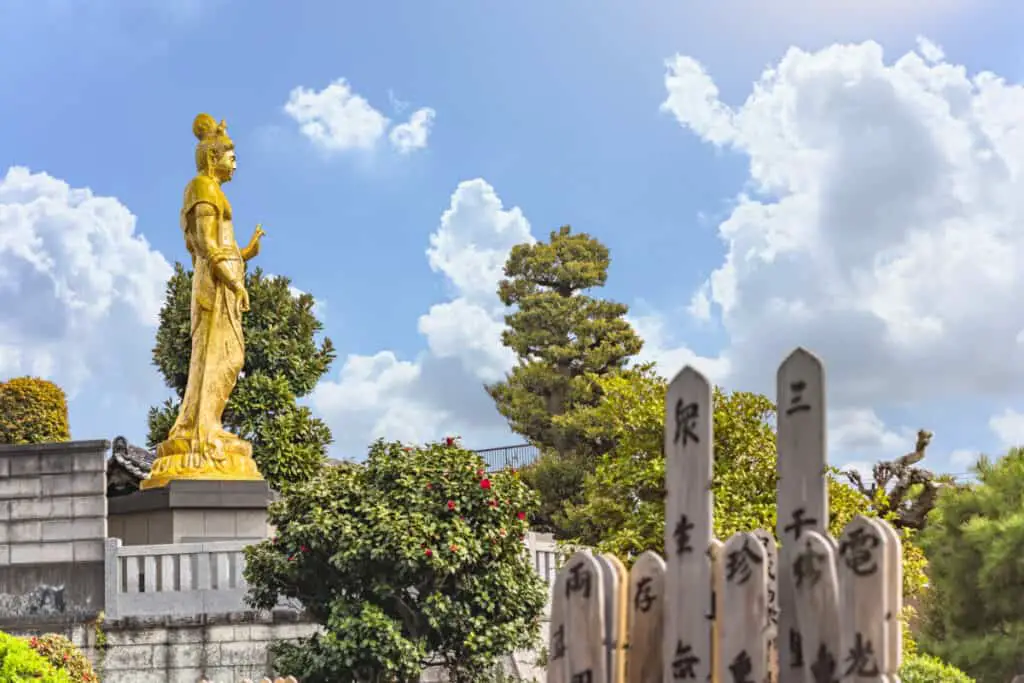
Zenshoan Temple Official Website
Yamaoka Tesshu built Zenshoan Temple in 1883 to pray for those who perished between the end of the Tokugawa-shogunate period and the Meiji Restoration in 1868. Sanyutei Encho, a rakugo storyteller, is buried here.
Zenshoan has a calligraphy collection of exceptional quality as well as a collection of 55 yurei-ga ghost scrolls. Every year in August, a must-see collection of eerie Japanese ghost documents are shown at the temple.










